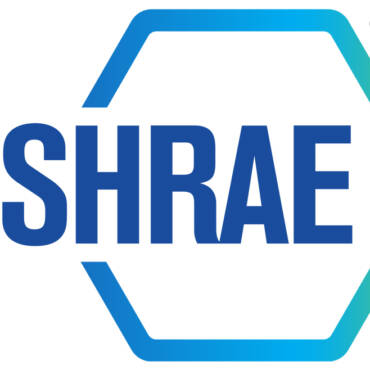✕
Whether or not an HVAC contractor offers additional services — like plumbing, electrical, lighting, smart home control, or garage door installation — seems to make little difference in a homeowner’s decision on who to hire.
At least that’s what the data from a recent survey conducted by The ACHR NEWS and myCLEARopinion showed. Though offering additional services reportedly doesn’t have an effect on landing a job, the survey also found that electrical and plumbing are the most appealing add-ons to homeowners.

Click graph to enlarge
OFFERING MORE: Other additional services homeowners were asked about included lighting, security systems, and smart home controls. (Courtesy of myCLEARopinion Insights Hub)
A lot of HVAC contractors are already offering additional services such as electrical and plumbing — in fact, that was the case for more than half of those surveyed. And the one thing all of these contractors likely had in common: They knew that their company was ready to take on an additional service or two, and they knew how to market each trade.
– Matt Marsiglio
general manager
Flame Furnace
Plumbing and Electrical
There are a variety of reasons why a company might want to add a trade. The biggest one seems to be to maximize an opportunity.
At Redwood Services in Memphis, Tennessee, along with HVAC, the outfit offers plumbing, electrical, sewer and drain services. Many of their partners will also install generators.
“Let’s just say in your HVAC business, you’re clicking on all cylinders,” said John Conway, chief operating officer at Redwood. “Your business is doing great, you’re profitable, business is very solid, and you feel like you’ve got the bandwidth. That’s a great time to add plumbing.”
That’s what Conway did.
“And it really helps kind of smooth out the year where it’s not all these ups and downs that are based on weather, because, you know, water heaters and toilets and plumbing fixtures, they break year-round,” Conway said.
Looking for a reprint of this article?
From high-res PDFs to custom plaques, order your copy today!
Once they had mastered HVAC, Redwood knew they were ready to take on more.
Flame Furnace in Warren, Michigan, had a similar journey. In addition to HVAC, the contracting company offers plumbing and electrical.
“When we realized we had a customer base that was using other contractors for these services, many of which are our maintenance plan customers, that’s when we could tell our company was ready to add plumbing and electrical,” said Matt Marsiglio, general manager at Flame Furnace.
At Rooter Hero Plumbing & Air, they focus on what they do best, which is plumbing and HVAC. They offer everything from emergency plumbing repairs to HVAC maintenance and installation. But they took a bit of a different path than the two contractors previously mentioned. Rooter actually started as a plumbing company in 2011, and made the decision to expand into HVAC services in 2019.
“It wasn’t something that happened overnight,” said John Akhoian, founder and CEO at Rooter. “We had to make sure that we were ready in terms of expertise, resources, and market demand. Our core strength has always been plumbing, with deep roots and experience going back more than 90 years. We knew that to uphold the same level of service and reliability in HVAC, we needed to ensure we had a team that was just as skilled and passionate about air conditioning and heating as we are about plumbing.”
How did they know they were ready to take on HVAC? It was a combination of factors.
“First, we listened to our customers,” Akhoian said. “Many of them were asking for HVAC services, and we saw a real opportunity to meet that need. Second, we had built a strong foundation in terms of operational excellence and customer service, which gave us the confidence to take on a new challenge. Finally, we invested in training and hiring the right people who could deliver the same quality service that our customers expected from us in plumbing.”

TOP CHOICES: Though HVAC contractors offering additional services doesn’t matter all that much to homeowners, if they were to, they’d prefer they offer plumbing and electrical services. (Courtesy of Redwood Services).
Marketing and Profits
One way or another, contractors have to get the word out when they add another service. Conway suggests extending maintenance plans to the new trades, hosting a grand opening, sending out direct mail, texting customers, doing radio and television ads, and leveraging social media.
When it comes to marketing multiple trades, there are a few different ways it could be handled. They could be marketed separately, together, or both.
Flame Furnace does both. Sometimes they target specific trades at certain times, and sometimes they market all three trades at the same time, said Marsiglio.
Redwood tries to drive leads digitally, separately between HVAC, plumbing, and electrical. Conway said that on the mass media side, contractors may market all their trades together in branding campaigns, but then market them separately to attract the customer that has a need of a particular trade.
Rooter tailors their approach for different segments as well, since plumbing and HVAC have distinct customer needs and service expectations.
“We craft our marketing messages to resonate with each audience specifically, ensuring we’re addressing their unique pain points and showcasing the benefits that matter most to them,” Akhoian said. “It’s about connecting with our customers where they are and speaking their language.”
When it comes to the profit margins of each trade, those also tend to vary.
“Electric and plumbing are similar,” Conway said. “The gross profit targets of those businesses are somewhere in that 56-60% gross margin range.” Plumbing tends to have a little bit more material cost than electrical. “On the HVAC install side of the business, that’s a little bit lower profit margin business, typically in the 48-50% range, and that is on the gross margin side, and that is driven by the cost of equipment.”
A lot of the profit margins for each trade do depend on that cost of material, as well as what the install requires.
“The cost structures, market demand, and competitive landscape differ for plumbing and HVAC services,” Akhoian said. “For example, HVAC installations might have different material costs and labor requirements compared to a plumbing repair, which can influence the margins. Each trade has its own set of dynamics that we have to navigate to ensure we’re operating efficiently and profitably. It’s a bit like managing two different teams in a relay race — each has its own strengths and challenges, and you have to play to those to win the race.”
Challenges and Benefits
When a contractor decides to manage multiple trades like HVAC, plumbing, and electrical, there are bound to be some challenges that come with the turf.
Marsiglio said one challenge is understanding the operational differences between each trade, and then understanding how to overcome them.
Treating each trade as its own is arguably the biggest challenge a contractor may run into. They need to ensure they have the right team, the necessary resources, and the expertise.
“One of the big [challenges] is maintaining the same level of expertise and service quality across the board,” Akhoian said. “Each trade has its own set of skills, regulations, and customer expectations, so ensuring your team is equally proficient in all areas can be demanding.”
It not only requires continuous training, but it also requires an investment in the right type of skilled tradespeople who are passionate about the work they do.
“Additionally, balancing resource allocation and managing different operational costs can be tricky, especially when each trade has its own unique demands and profit margins,” Akhoian said.
Along that same vein, Conway said a challenge of additional trades is making sure that a contractor is giving the necessary attention, management, and marketing to those added/smaller trades.
“For instance, if you add plumbing and it becomes 5% of your business, but then you don’t spend enough time, energy, focus, planning, management, marketing resources on that 5%, then it’ll always be 5%,” Conway said.
The positives, when additional trades are executed successfully, are significant. Contractors can become a “one-stop shop” for their customers. Enhancing customer experience, trust, satisfaction, and loyalty.
“We are ‘owning the home,’” Marsiglio said.
When customers know they can rely on the same contractor for multiple services, they are less likely to give their service to a competing outfit.
“This diversification can also stabilize your revenue streams,” Akhoian said. “If one trade experiences a seasonal dip, another might pick up the slack, providing a more consistent income. Plus, the cross-selling opportunities are fantastic. You can offer bundled services or maintenance packages that cater to multiple needs, increasing your value proposition to customers.”
Considerations
There are a few key things for contractors to consider when toying with the idea of adding an additional trade to their list of services — for starters, that expertise. Contractors have to ensure they hire the right technicians with the necessary skills and knowledge to maintain the quality of work across each trade.
“This often means investing in hiring and training skilled professionals who are passionate about their craft,” Akohian said.
Conway said that sometimes the best way to add a trade is buying a small company, which is what Redwood did.
It’s also crucial for contractors to invest in the right trade, which means they will have to consider market demand by listening to their customers to understand what services they are looking for.
“If there is a strong demand for a particular trade, it might be worth exploring. But if it’s not something your customers are asking for, it could be a risky investment,” Akhoian said. “Don’t forget about compliance and regulations. Each trade may have its own set of rules and permits, so staying informed and compliant is essential to avoid any legal hiccups.”
Resource allocation is also a biggie, Akhoian said. Managing different trades means juggling various operational costs, equipment, and personnel. There has to be a plan in place to balance all of these factors.
“Contractors should also consider how good they are at their current trade — meaning, are you hitting your KPIs? Consider if they have proper gross margins, if they are profitable, and the other thing they need to consider is, do they have the cash to add these trades?” Conway said. “Because there is going to be an outflow of cash. You’re going to need to hire people before you need them, buy the tools and trucks before you need them, and do marketing before you need it. You are going to be spending money getting into these trades before you actually reap any of the benefits.”
Whether you require installation, repair, or maintenance, our technicians will assist you with top-quality service at any time of the day or night. Take comfort in knowing your indoor air quality is the best it can be with MOE heating & cooling services Ontario's solution for heating, air conditioning, and ventilation that’s cooler than the rest.
Contact us to schedule a visit. Our qualified team of technicians, are always ready to help you and guide you for heating and cooling issues. Weather you want to replace an old furnace or install a brand new air conditioner, we are here to help you. Our main office is at Kitchener but we can service most of Ontario's cities
Source link


